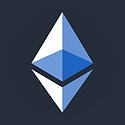U.S. Overview
Getting Back on the Normal Track
With five years of GDP growth in the books since the end of the Great Recession, conditions finally appear to be returning to something closer to normal. While nonfarm employment growth fell short of expectations in August, our forecast for the second half of the year has been ratcheted up based on better data on international trade, the ISM surveys, construction spending and consumer confidence. We now expect real GDP to rise at a 2.9 percent pace in the third quarter and look for a 3.0 percent gain in 2015 and 3.1 percent growth in 2016. The next 10 quarters should mark the strongest run of economic growth since the middle part of the last decade. The improved economic performance reflects the lagged effects of stronger job and income growth, which along with lower gasoline prices should keep consumer spending on a solid trajectory. Business fixed investment spending also looks to be a little stronger and the economy is getting a big lift from increased energy production. Even the housing recovery should get back on track, albeit a very slow one. The age of fiscal restraint is also coming to an end, as improving tax revenues allow government spending to increase a bit.
Stronger economic growth will also pull inflation and interest rates a little higher. But with the global economy struggling and commodity prices weakening, inflation should remain relatively modest, giving the Fed the freedom it needs to move cautiously and incrementally. As long as that message is telegraphed well, bond yields should also rise gradually.
International Overview
Weak Global Growth Continues, Risks Remain
As the U.S. economy has continued to grow at a relatively strong pace, some large foreign economies have continued to experience important challenges that will limit their contribution to worldwide economic growth. Today, the U.S. economy can claim that it is growing mostly without help from the rest of the world. However, for the rest of the global economy that claim cannot be made as weak economic growth in the Eurozone is damping the prospects of better economic prospects. The recent move by the European Central Bank (ECB) to further reduce interest rates and to start its Quantitative Easing (QE) program, a program that is coming to an end in the United States, underscores the weak economic environment in the region. Although we have seen some improvement in German economic activity during the first months of the third quarter, which should improve the region’s performance in the quarter versus a stagnant second quarter, the overall state of economic activity in the Eurozone likely will remain very weak and will not contribute much to overall global economic growth.
Furthermore, a Scottish move toward independence, should it occur, could wreak havoc on a European region that needs to get more certainty rather than less. This event could rekindle other secessionist impulses that have been brewing for centuries in the old continent and further increase the uncertainty of a sustained economic recovery.
Recommended Content
Editors’ Picks
AUD/USD post moderate gains on solid US data, weak Aussie PMI

The Australian Dollar registered solid gains of 0.65% against the US Dollar on Thursday, courtesy of an upbeat market mood amid solid economic data from the United States. However, the Federal Reserve’s latest monetary policy decision is still weighing on the Greenback. The AUD/USD trades at 0.6567.
EUR/USD recovers to top end of consolidation ahead of Friday’s US NFP

EUR/USD drove back to the top end of recent consolidation on Thursday, recovering chart territory north of the 1.0700 handle as market risk appetite regains balance heading into another US Nonfarm Payrolls Friday.
Gold recoils on hawkish Fed moves, unfazed by dropping yields and softer US Dollar

Gold price clings to the $2,300 figure in the mid-North American session on Thursday amid an upbeat market sentiment, falling US Treasury yields, and a softer US Dollar. Traders are still digesting Wednesday’s Federal Reserve decision to hold rates unchanged.
Ethereum may sustain trading inside key range, ETH ETFs to be delayed until 2025

Ethereum is beginning to show signs of recovery on Thursday despite a second consecutive day of poor performance in Hong Kong's spot Ethereum ETFs. Bloomberg analyst James Seyffart has also shared that a spot Ethereum ETF may not happen in the US in 2024.
FOMC in the rear-view mirror – NFP eyed

The update from May’s FOMC rate announcement proved more dovish than expected, which naturally weighed on the US dollar (sending the DXY to lows of 105.44) and US yields, as well as, initially at least, underpinning major US equity indices.